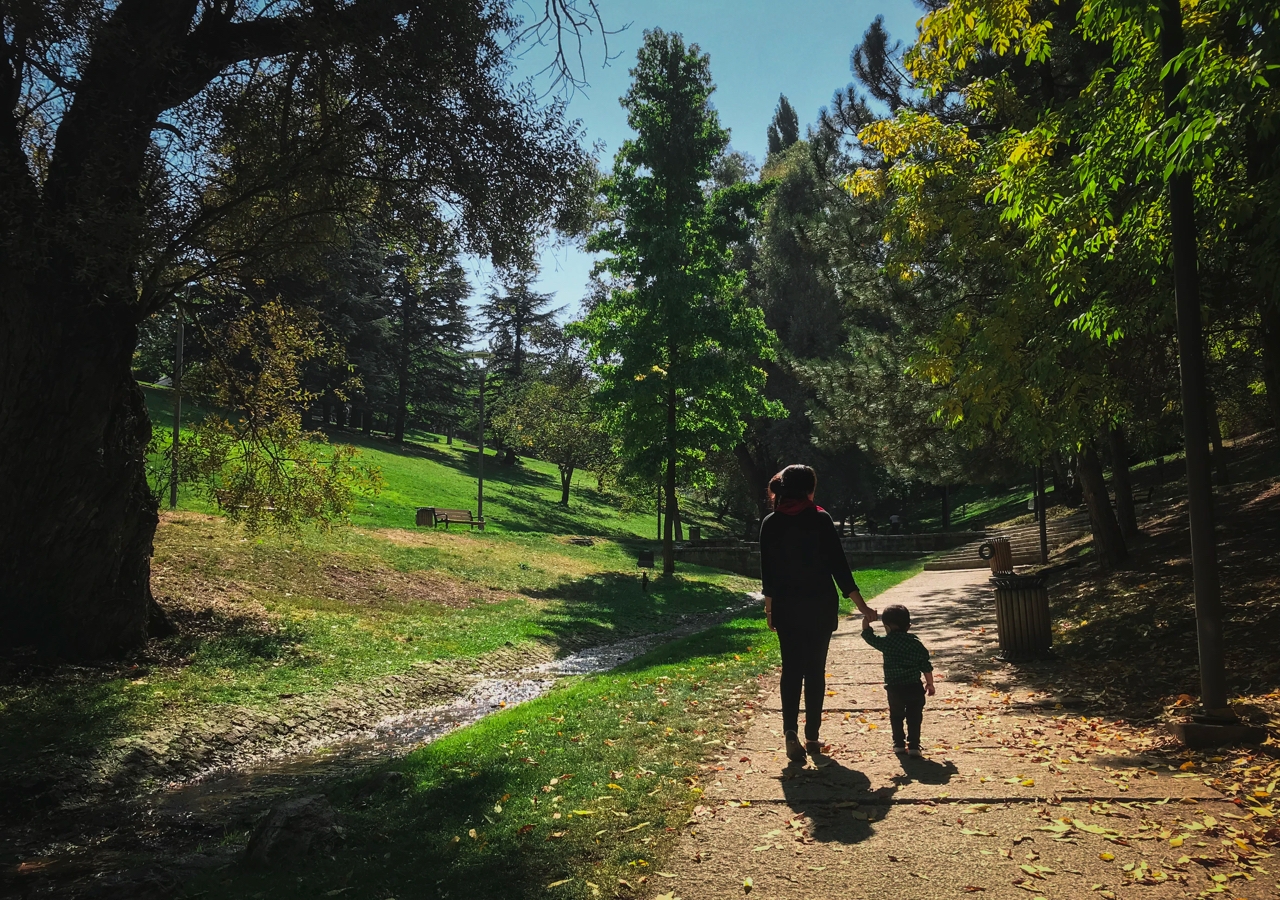Walking regularly can burn calories, reduce risk of heart disease, lower blood sugar, and boost stamina and immune function. Yet aside from the well-known physical benefits, walking is also beneficial to mental health, creativity, and to optimal performance at work and school.
“Methinks the moment my legs begin to move, my thoughts begin to flow,” said Henry Thoreau, accurately describing a feeling many of us have experienced, and highlighting the connections between moving and functioning.
The philosophers of ancient Greece also linked thinking to walking. Socrates and Aristotle conducted lectures while strolling, carrying books along with them. Other dedicated walkers in history included Albert Einstein and Virginia Woolf, while modern-day adherents feature Natalie Portman and Heidi Klum.
According to the American Centers for Disease Control and Prevention, moderate to vigorous activity such as walking can improve our sleep, thinking, and learning, while also reducing symptoms of anxiety.
When we go for a walk, we perform better on tests of memory and attention; our brain cells build new connections, staving off the usual withering of brain tissue that comes with age, wrote Ferris Jabr in an article published by the New Yorker.
“We can actively change the pace of our thoughts by deliberately walking more briskly or by slowing down,” Jabr explained. Thus our attention is left to observe and wonder, helping us generate new ideas and have strokes of insight.
Research suggests that it’s possible to improve mood and self-esteem with only a very short time out in nature, even just five minutes. One study concluded that a short lunchtime walk in a park is just as beneficial as specific relaxation exercises, and can assist employees to recharge in order to perform better at work.
Although walking is the most simple of exercises, it is not necessarily easy for everyone. Some might experience mobility challenges, time constraints, and adverse weather conditions. But even for those who are not currently active, beginning a walking habit is an achievable goal. The key is to start with small steps, quite literally!
You could make it part of your daily routine, by ambling to the shops instead of driving, using stairs instead of an elevator, or taking a short stroll after lunch or dinner.
While strolling, some people listen to podcasts or audiobooks, or catch up on phone calls. You might be surprised at how quickly time can pass while focusing on listening to something or someone when out and about.
There are also plenty of smartphone apps to help design routes, measure distances and speed, set targets, and assist with motivation. Another way to boost motivation levels could be to join a walking community. Just as a book club keeps readers on track and creates a shared experience, a walking club can have a similar effect.
In this vein, the Aga Khan Health Board (AKHB) and Youth & Sports Board (AKYSB) in the UK recently launched a Walking for Wellness initiative: an eight-week challenge to improve mental, emotional, and physical health, and to strengthen general wellbeing. Open to all ages and abilities, the aim is to form a group who motivate one another, track progress over time, and celebrate successes.
“The initiative has brought together Ismailis from around the UK jurisdiction through a smartphone app and has encouraged us all to enjoy the multiple benefits to walking, share daily walks and in particular, beautiful spots in nature,” said Natasha Jiwa from AKYSB’s health and wellness team.
Stepping out into nature and wild greenery is ideal, although built-up urban areas also offer interesting routes, along heritage trails, rivers and canals, or through parks and gardens. Roaming outside can help to clear the mind and organise our thoughts.
In Singapore, the Ismaili Council for the Far East organised a walk focused on mindfulness — no technology allowed. Participants laced up their sneakers and walked in the lush, picturesque Botanic Gardens of Singapore. Adults and children alike participated in a physically distanced format, while trainers facilitated multiple activities that enabled the participants to take charge of their physical and mental wellbeing, including mindful breathing exercises and discussion.
“This was a powerful experience to press pause and live in the moment. Breathing exercises were a perfect way to start. Team leads were calm, soft spoken and motivating, and helped set the tone for the walk,” said Nadya Karmali, a member of the Far East Jamat.
Taking the time to pause from our daily routine and responsibilities, away from devices and screens, can also help to offer a sense of perspective - much needed at this strange and uncertain time.
“On days when I need some perspective, I’ll stroll while looking at the sun, the trees, or the water,” wrote Deborah Grayson Riegel recently in the Harvard Business Review. “Those views remind me to reflect on the expanse of the universe, to appreciate the beauty of nature, and prompt me to consider how much world there still is for me to explore (when it’s safe to do so).”
So today — as soon as is practically possible — get out into the sunlight and fresh air, take a few deep breaths, and remember how good it feels to be alive.









